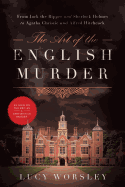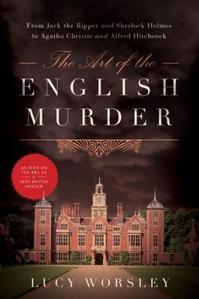

Her historical account covers two centuries of murder, mayhem and those writers whose detectives solved the cases. Worsley starts in 1827 with Thomas De Quincey's influential essay "On Murder Considered as One of the Fine Arts," which revealed the ways in which the grisly act can be both performance and entertainment. This led to the rise of sensational journalism, plays, murder-site tourism and the "whole body of detective fiction." De Quincey's essay delves into the infamous 1811 Ratcliffe Highway Murders. John Williams was suspected of brutally murdering seven people: a couple, their infant son and their apprentice, and three people in a tavern several days later. Quickly convicted by the public, Williams hanged himself in prison before the trial and his dead body was paraded through town before vast crowds. It was the first "great modern mass-media sensation" and resulted in a new genre of journalism: murder reporting, with all its inaccuracies and gory details.
The rise in popularity of Madame Tussauds house of wax horrors in the 1840s clearly demonstrated what the working classes wanted to do in their leisure time: "come face-to-face with murderers." If that wasn't possible, then they wanted to read about them. Worsley's survey moves on to other infamous 19th-century murder cases (William Corder's murder of Maria Marten; Jack the Ripper) and then covers how great writers such as Charles Dickens and Wilkie Collins incorporated grim mysteries into their hugely popular works. T.S. Eliot argued that Collins's epistolary novel The Moonstone, published in 1868, was the first English detective novel. In 1887, with A Study in Scarlet, Arthur Conan Doyle gave birth to the "latest of Victorian inventions--the forensic scientist": Sherlock Holmes.
Worsley notes ironically that by the 1930s the murder rate had fallen to the lowest level Britain had ever seen, and yet, after World War I, the country experienced a "great explosion of fictional death by the novelists of the so-called 'Golden Age' of detective fiction." But these murders were tidy and domesticated, "causing little more upset than a lost cat." Edgar Wallace led the charge, followed by the four "Queens"--Agatha Christie, Dorothy L. Sayers, Margery Allingham and Ngaio Marsh. Worsley speculates that they were popular because readers welcomed a more "feminine view of the world" after the Great War. She concludes with a nod to Alfred Hitchcock and his film The Lodger, which she feels looks back to the sensation novels of the 1860s.
Reading Worsley's simple, breezy prose is like softly sipping hot tea from a delicate British teacup: it takes little effort to digest the heartless criminals and their grisly crimes. --Tom Lavoie, former publisher
Shelf Talker: This vivid account of the art of British murder is deliciously rendered with style and aplomb.

